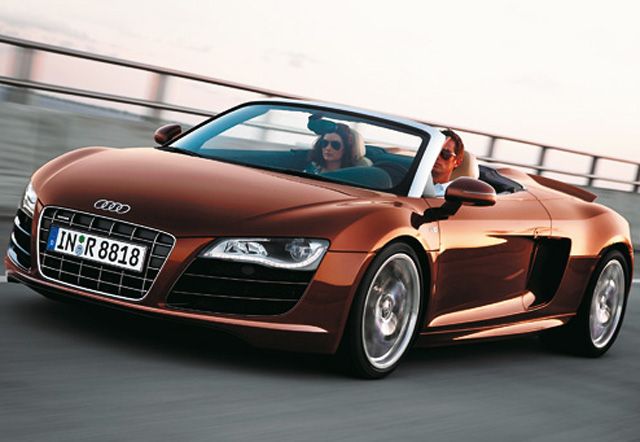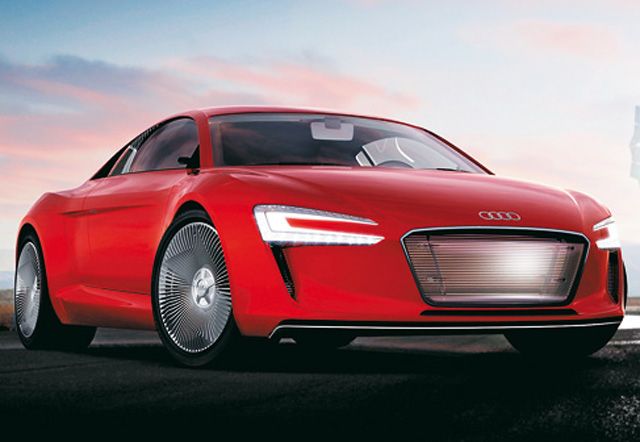The success of Audi's R8 has spun off two more Frankfurt headliners, which were contrasting yet striking examples of German ingenuity. The R8 Spyder, with its gas-guzzling 5.2-litre V10 steals the limelight on sheer looks and elegance alone, whereas the less image-conscious e-tron concept pushes the boundaries of all-electric performance, silently gunning to 100kph in just 4.8 seconds.
R8 Spyder
Shedding the roof of this much-loved supercar has certainly hampered its performance: 0-100kph takes 4.1 seconds — that's two-tenths slower than the roofed and sidebladed version. That said, you still get the hand-built, normally aspirated V10, host to a rating of 100.9bhp per litre.
The 5.2-litre mid-ship mounted engine develops 518 horses, throws its hooves down through 530Nm of peak torque delivered at 6,500rpm to give a top speed of 313kph. So, really, what is a couple of hundredths of a second for some open-top cruising?
It's stunning, and even though the distinguishing side blades are gone, the addition of air vents over the powerhouse more than makes up for it. The massive side scoops, meanwhile add an element of class to the Spyder and draw the eye to the other new addition, the 19in Y-design rims. But little else has changed in the overall look. The yet-to-be-seen cloth roof is said to drop in a mere 19 seconds, even on the move, as long as you're gliding below 50kph. Buyers can expect the usual splashes of aluminium and nappa leather trim inside, as seen in the coupé.
Want one? You'll have to wait until next year as prices for the Middle East are yet to be confirmed. But expect a slight premium over the R-tronic R8 V10 coupé.
E-tron
It might be the futuristic ugly duckling of the R8, but the e-tron grabs you by the collar with one astounding figure; 4,500Nm of torque from a four-battery-powered unit. Can't complain too much there.
Fully charged the lithium-ion power unit is good for a 248km range, which isn't too shabby for an all-electric car. However, compared to the Tesla Roadster, the e-tron loses out not only on travelling distance (the Tesla does 393km) but also on the climb to 100kph by almost a second, at 4.8 seconds.
The electric motors deliver the power via a mid-engine sports car set up, distributing 70 per cent of the power to the rear and the remainder to the front axle. Lightweight ceramic brakes utilise recuperation technology by means of brake-by-wire at the rear and hydraulics at the front axle to improve energy recovery.
However, it's not stunning in the looks department. For instance, the blade wheels look like colanders and those chrome grilles, front and rear, don't help much either. Although they do actually increase performance by reducing drag. Each slat closes up to increase airflow around the car, or opens to enhance intake depending on the requirements of the powerhouse.
Also, the full LED boomerang headlights illuminate approaching corners and automatically dip when met with oncoming traffic. That, and the powerplant, are bits of tech we'd like to see in the production model, Audi. Just go easy on the shiny stuff.





